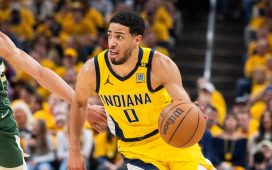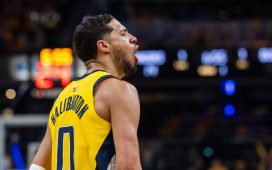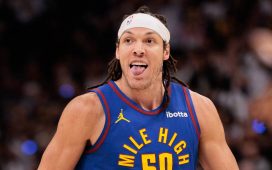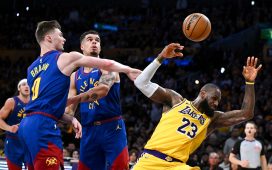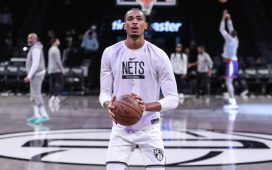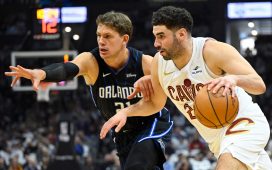NEW YORK — Once upon a time, this was supposed to be the Brooklyn Nets: Building patiently, developing late draft picks and smart free-agent signings and riding in the slipstream of good culture vibes while keeping their powder dry for just the right moment to pounce on a big star.
But this past Saturday, as on most days this season, it was their crosstown rivals in Madison Square Garden that had all the right ingredients for that formula. The most notable thing about the New York Knicks’ perfunctory 105-93 win over the Nets on Saturday was that it wasn’t even remotely surprising. It was yet another data point in the divergence between the stumbling rebuild in Brooklyn and the near-flawless execution of New York’s surprising rise from the Dolan doldrums.
The Knicks, of course, used to be the last team on Earth you’d think would be capable of this. Before Leon Rose and Co. showed up in 2020, no team chased shiny objects down dead ends more enthusiastically than the ‘Bockers, with their twin superpowers of incompetence and impatience multiplying each other’s impact.
Meanwhile, Brooklyn did all that stuff perfectly in the beginning of the Sean Marks era; starting in 2016, the Nets turned one of the most hopeless situations in league annals into a scrappy playoff team and then, suddenly, one with multiple superstars on board — after Kevin Durant and Kyrie Irving had spurned those same Knicks. Ironically, that’s when everything started going sideways in Brooklyn.
For the situation to look like this five years later seemed unimaginable back then, but somehow, some way, the world is upside down now. The Knicks became the Nets, and the Nets became the Knicks.
Just look at these teams. Virtually every key player on the Knicks got there as the result of a plus transaction. Splashing out on Jalen Brunson is one thing, but look up and down the roster: Josh Hart cost a late first, Mitchell Robinson and Miles McBride were picked with early seconds, and Donte DiVincenzo and Isaiah Hartenstein came as screaming bargains via the midlevel exception.
Meanwhile, Ben Simmons’ whole saga and contract is about the Knicksiest thing you can imagine, but he in fact plays for the Nets. The entire Irving ordeal, letting Bruce Brown walk, turning down overwhelming offers for Mikal Bridges and the musical coaching chairs … all this is stuff straight out of the early-2000s MSG playbook.
Stability-wise, the Knicks have had the same coach since the start of the 2020-21 season (closing in on Tom Thibodeau’s longest tenure!), while the Nets are on their third. Given that he apparently isn’t the solution either — the Nets are 5-11 under Kevin Ollie, including losses in seven of their last eight after an initial dead cat bounce following the coaching change from Jacque Vaughn — it will probably be four next fall.
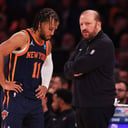
GO DEEPER
Amick: Why players couldn’t be more wrong about Tom Thibodeau
This same front office has been in worse straits, when Marks took over the dilapidated ruins of the Mikhail Prokhorov era and built it up around culture, player development, inspired scrap-heap pickups and shrewd drafting.
Can they pull off this trick a second time? There’s an unsettling stuck-in-mediocrity feeling about the current post-superstar version of Brooklyn, one it’s having a hard time shaking off. The Nets have no control over their first-round pick this year, and thus no tanking incentive, yet are still miles from making the Play-In Tournament, much less doing anything of enduring significance. Going forward, they still owe an unprotected first-round pick to Houston in 2026 and unprotected swaps to the Rockets in 2025 and 2027, all as a result of the James Harden trade.
That’s where the disappointment of this season hits harder. Imagine a scenario in which the Nets won 45 games, earned a middling playoff seed and made somebody sweat in the first round; they could take that level of success into the market this summer and perhaps tempt a star to be a leading man on an already good team in a big market. They don’t have their own draft picks, but they have a wad of unprotected Phoenix firsts from the Kevin Durant deal to use as trade capital.
Instead the Nets are 26-45, six games behind the Atlanta Hawks for 10th place in the Eastern Conference, with 11 games left to play. For all intents and purposes, their wasted season is already over; all that’s left to figure out is how high a lottery pick the Rockets walk away with from the Harden trade.
Individually, it’s tough to see who on this roster is centerpiece material on an elite team. Mikal Bridges is an indefatigable iron man who has played the full schedule in five of his six pro seasons, but he doesn’t look like a foundational All-Star, as seemed perhaps possible during his initial run as a Net after the trade last year. “Brooklyn Bridges” averaged 26.3 points on 60.1 percent true shooting after the All-Star break in 2022-23, but March games can be deceiving that way. This season’s numbers are a more pedestrian 20.1 points on 56.1 percent true shooting. Yes, he defends and he’s durable and he’s an elite role player, but he needs to be with at least two players who are better.
Those guys won’t be found on the current roster. Cameron Johnson signed a $108 million deal this past summer and goes long stretches where you forget he’s even playing (Saturday: 31 minutes, 13 points, two rebounds, two assists); again, playing with elite talent would likely do wonders for his floor-spacing powers. Similarly, Nic Claxton is a good player and was a heck of a draft find, but he has offensive limitations, gets beasted by the biggest centers and will need a new contract this summer. Their best young player, Cam Thomas, is notable mostly for a non-branching decision tree that only points toward “Shoot.” After that, the roster is either veteran role players (Dorian Finney-Smith, Dennis Schröder), unproven youth (their two first-round picks have combined to play 126 minutes and score 37 points) and, um, Simmons.
The Nets do have hope, in the form of unprotected picks from Phoenix and Dallas from trading Durant and Irving, but the high-end outcomes from those picks may not really come until 2029, when they have both the Mavs and Suns picks unprotected. That’s half a decade away, and the Nets can’t tank their way toward a 2029 crescendo. So, uh, what are they supposed to do between now and then? This, again, is where the disappointment of this season looms large.
It stings worse because the Nets may have missed a golden opportunity to cash in further last winter when they had huge offers on the table for Bridges; not moving Finney-Smith may have also been a mistake. (They at least got 75 cents on the dollar back on Royce O’Neale.)
If the Nets are hoping to strike the free-agency jackpot a second time, cap room scenarios aren’t on the table until the summer of 2026 at the earliest. Even if they were, this isn’t 2019. Nobody is getting Durant and Irving on the same day in free agency anymore. Everyone signs extensions now, so with rare exceptions, cap room only gets you the right to overpay the third-best player on another team that doesn’t want him anymore.
Where does that leave Brooklyn? Kind of in the same place the Knicks were half a decade ago, badly needing to stack a series of good decisions on top of one another to get anywhere close to the contending class. That exalted air seemed the Nets’ inevitable destiny just a few short years ago; now it seems likely to be their crosstown rival Knicks’ next half decade instead.
Stat Geekery: Missing Fouls Mystery
You’ve probably heard by now that fouls are down, and so is scoring, since the All-Star break. I won’t rehash all the fine work done in other places, including by our Seth Partnow here on the exact size and impact of the change, and by Bball Breakdown here describing exactly the type of forearm-riding fouls officials have been reluctant to whistle since early February.
There’s no question the NBA handled this badly, at first insisting there was nothing to see here and then, when the data became too obvious to ignore, following up with a statement that said, OK, maybe we kind of started doing something a little different.
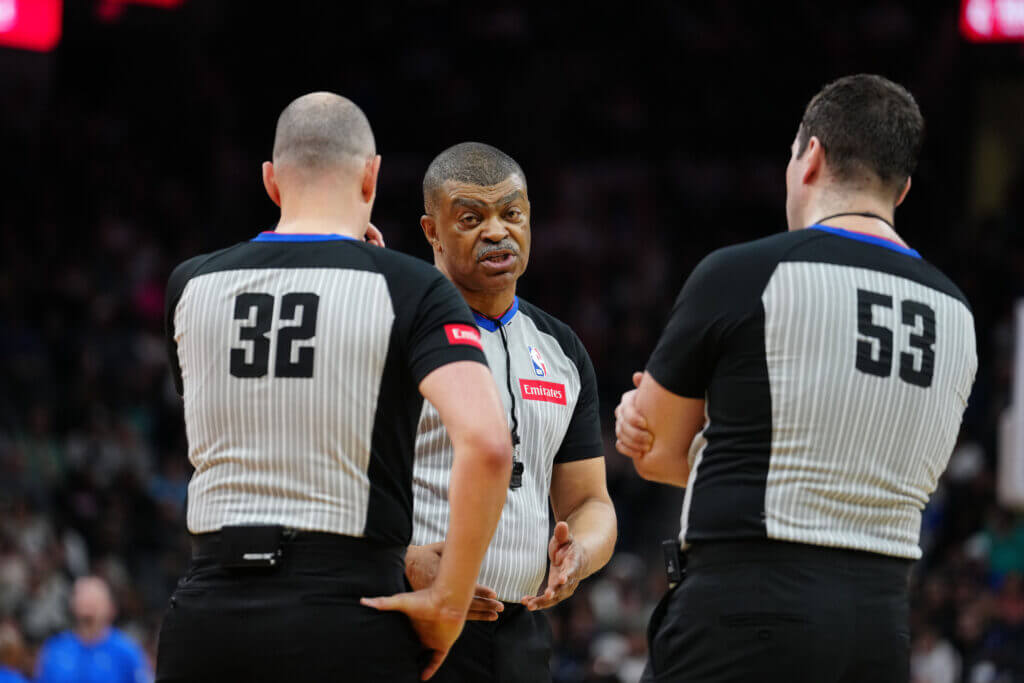
NBA officials Marat Kogut, Tony Brothers and Matt Kallio discuss a call during a recent Mavs-Spurs game. (Daniel Dunn / USA Today)
One thing Seth pointed out that I think hasn’t been fully explored, however, is all the potential secondary effects from this. For starters, players react to how the game is being called and self-edit in real time.
But the other level to this is that the players’ bodies don’t necessarily adjust as quickly. Is it possible we’ve had more injuries as a result of fewer whistles? Not because of increased physicality, but because of increasingly long back-and-forth sequences with fewer breaks in between?
Those who track such things more religiously than I were reporting that injuries were down through the first half of the season, but since the All-Star break, we’ve had skeleton crew teams taking the floor more frequently, to the point that Tosan Evbuomwan, Thomas Bryant, Rayan Rupert, Javon Freeman-Liberty, Jahmi’us Ramsey, E.J. McFlooger, Jordan Goodwin, Johnny Juzang and Vit Krejčí all started games this past weekend. (I only made up one of those names; see if you can guess which one.)
Partly, this is a natural consequence of what happens in the second half of the season, especially for non-contending teams that have little incentive to risk their best long-term talent if they have iffy physical situations. However, we’ve seen some good teams end up in skeleton-crew situations too. We probably don’t have enough information to know what’s happening here and won’t for a while, but I’m wondering if there’s a correlation and, if so, how strong?
Finally, here’s one bigger-picture thing I don’t understand about the reduced whistles: Can we stop talking about this like it’s some kind of problem? Am I missing something here, or have the games been way better? With fewer whistles and more continuous action, we get more transitions, more players reading and reacting rather than set play calls and quicker games overall. This is a bad thing?
The fact this has been accomplished while still mostly preserving the offense output of the first four months of the season and not dragging everybody in the mud seems like a huge win for the league. Offensive efficiency is still at record levels since Feb. 1, as Seth pointed out; it’s just not at the blowtorching-the-record-into-molten-lava levels of the previous months.
The history of officiating “points of emphasis” is that there is a big impact at first, followed by a slow, steady backslide toward the previous default state. However, if the league can continue to strike the recent balance into April and May, we could be in store for every entertaining postseason.
Draft Geekery: Ignite’s Launch Failure
I spent my week in New York and Pittsburgh eyeballing draft prospects at the NCAA Tournament, and I’ll have more on that soon. In the meantime, we also need to discuss the week’s other big draft-adjacent news: The NBA’s decision, first reported by our Shams Charania, to shutter the G League Ignite program after this season was surprising only perhaps for the timing of the shuttering. With multiple players committed to two-year deals, there was some thought that the program’s inevitable end would come next year and not this spring.
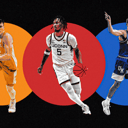
GO DEEPER
NBA Mock Draft: Zaccharie Risacher still No. 1; NCAA tourney offers chance to impress
Nonetheless, the end of Ignite resolves a question that had been bothering front-office execs for a long time: Why, exactly, was the league getting involved in the player development game, and what did it have to gain from competing against the NCAA and overseas leagues for players in particular?
The kernel of the idea for this was the perception of the threat from Australia’s Next Stars program, which lured LaMelo Ball to spend a year ahead of the draft Down Under and has had some success in getting American players of slightly lower stature since then (among those playing this season are Trentyn Flowers, AJ. Johnson and Swedish product by way of Wake Forest Bobi Klintman; French likely lottery pick Alex Sarr is also in this program).
The issue for the NBA is that it would much prefer to keep its future lottery picks front and center domestically, so that there is instant brand equity when they come to the NBA. While there has always been some low-level threat from overseas leagues — witness Brandon Jennings’ year in Italy, for instance, or Emmanuel Mudiay’s jaunt in China — Australia’s program felt like more of a coordinated frontal assault.
However, that model of tempting players with cash to lure them away from the NCAA was completely obviated by the development of name, image and likeness, which has made it possible for top American players to cash in at the NCAA level without having to play in an overseas pro league.
Additionally, Ignite’s reason for existence was unclear on the player development level as well. Forget the team’s miserable record this season (6-42, with an impossibly bad minus-14.5 point differential) or the fact that Ignite signed several players who were totally overmatched even at the G League level. The bigger issue, even for the lottery-caliber talent, was that nobody seemed to be getting better; in a perhaps related story, it was hard to discern what they were playing for since none of their games truly mattered. It’s basically five months of glorified NBA Scouting Combine scrimmages for these guys. By draft night, smart teams have been pricing in the fact that Ignite’s players would probably look better after a few months in their own gym than they did playing with other teenagers in a glorified draft combine.
Ironically, Ignite’s final draft class could end up being its best one. Ron Holland, Matas Buzelis, Tyler Smith and Izan Almansa all are likely to be selected in June, with the first three potential lottery picks. And 17-year-old Dink Pate, though totally overmatched right now, has shown enough tools to get on everyone’s radar for 2025. (He’s not eligible for the 2024 draft and already signed with Ignite through next year; he could end up with another G League team instead.)
Nonetheless, few tears will be shed over the Ignite program’s termination. It outlived whatever usefulness it had a long time ago.
Get The Bounce, a daily NBA Newsletter from Zach Harper and Shams Charania, in your inbox every morning. Sign up here.
(Top photo of Jalen Brunson and Mikal Bridges: Wendell Cruz / USA Today)
